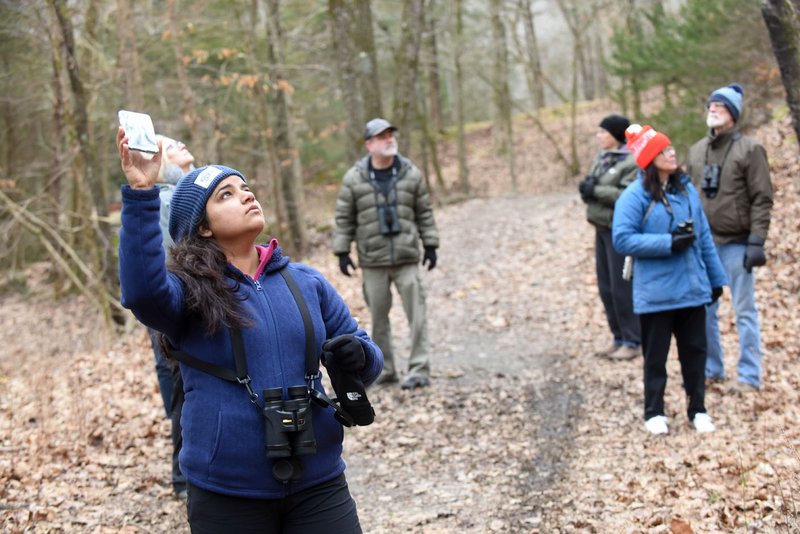Arkansas state parks are a fine destination to take a hike, ride a mountain bike or curl up next to a warm fire at a campsite or cozy cabin.
They're also top destinations to see and photograph birds. All kinds of birds -- from waterfowl to forest dwellers to birds that prefer open country -- can all be found at Arkansas' 52 state parks.
Help with the count
The Great Backyard Bird Count is a free, fun and easy event that engages bird watchers of all ages in counting birds to create a real-time snapshot of bird populations.
Next year’s count will be Feb. 14-17. For information visit birdcount.org.
Source: National Audubon Society
It appeared any visitors at Devil's Den State Park on a cold February morning were holed up in the park's quaint cabins close to a warm hearth. More visitors arrived one by one to look at birds, bundled against the 20-degree morning.
Joe Neal with the Northwest Arkansas Audubon Society gathered the small flock at the Devil's Den Trail parking area to outline the morning watch. The group would take a couple of short hikes, one along Lee Creek and another around a forested campground loop.
Birders would jot down the species seen along the way and tally them at morning's end.
The occasion was the 22nd annual Great Backyard Bird Count held around the United States each February. This year's count was Feb. 15-18. The event asks people to count birds they see at their home feeders, deep in a forest or anywhere else.
The list of species individuals and groups tally is submitted to the count's data base to create a snapshot of bird populations that year. A count can be as short as 15 minutes or a three-hour field trip like the one Neal led on Feb. 16.
The national tally gets casual and avid bird watchers involved, Neal said.
"And what a great excuse to come to Devil's Den," he said.
Lee Creek flows into Devil Lake in the heart of the park. Water helped get the count started when some fast-flying wood ducks took wing. A gaggle of robins got the group's attention.
"Where there are robins, there might be other fruit-eating birds," Neal coached.
Birds can be clever when it comes to getting food. Take the yellow-bellied sapsucker, a type of woodpecker. Neal led the group to a sugar maple tree where the small woodpeckers have bored hundreds of holes in rows around the trunk.
Sap wells, Neal called them. The holes release sap, and the woodpeckers come back later to dine, he said. The sap also traps insects that the woodpeckers eat.
Neal pressed a fingertip on the sappy trunk and sampled the sweet tasting goo.
A purple-ish bird cackled and flew in a dipsy-doodle pattern at nearby Lee Creek. "Kingfisher! Whoo-hoo yes!" Neal hollered. "Another one for the list!"
Robins and blue jays were common birds added to the tally, which is also shared with the staff at Devil's Den for its bird data base. Rarer birds like the hermit thrush got birders hoisting their binoculars.
Neal led the group to a field at the west edge of the park to end the trip. He raised his binoculars, then raised his arms and cheered. "Fox sparrow!" The bird's plumage sports red and gray hues similar to a fox.
Each checklist submitted during the count helps researchers at the National Audubon Society and Cornell Lab of Ornithology study how birds are doing, how to protect them and the environment. The event had some 160,000 participants in 2018, reports the National Audubon Society.
Next year's Great Backyard Bird Count will be Feb. 14-17.
Sports on 03/12/2019
